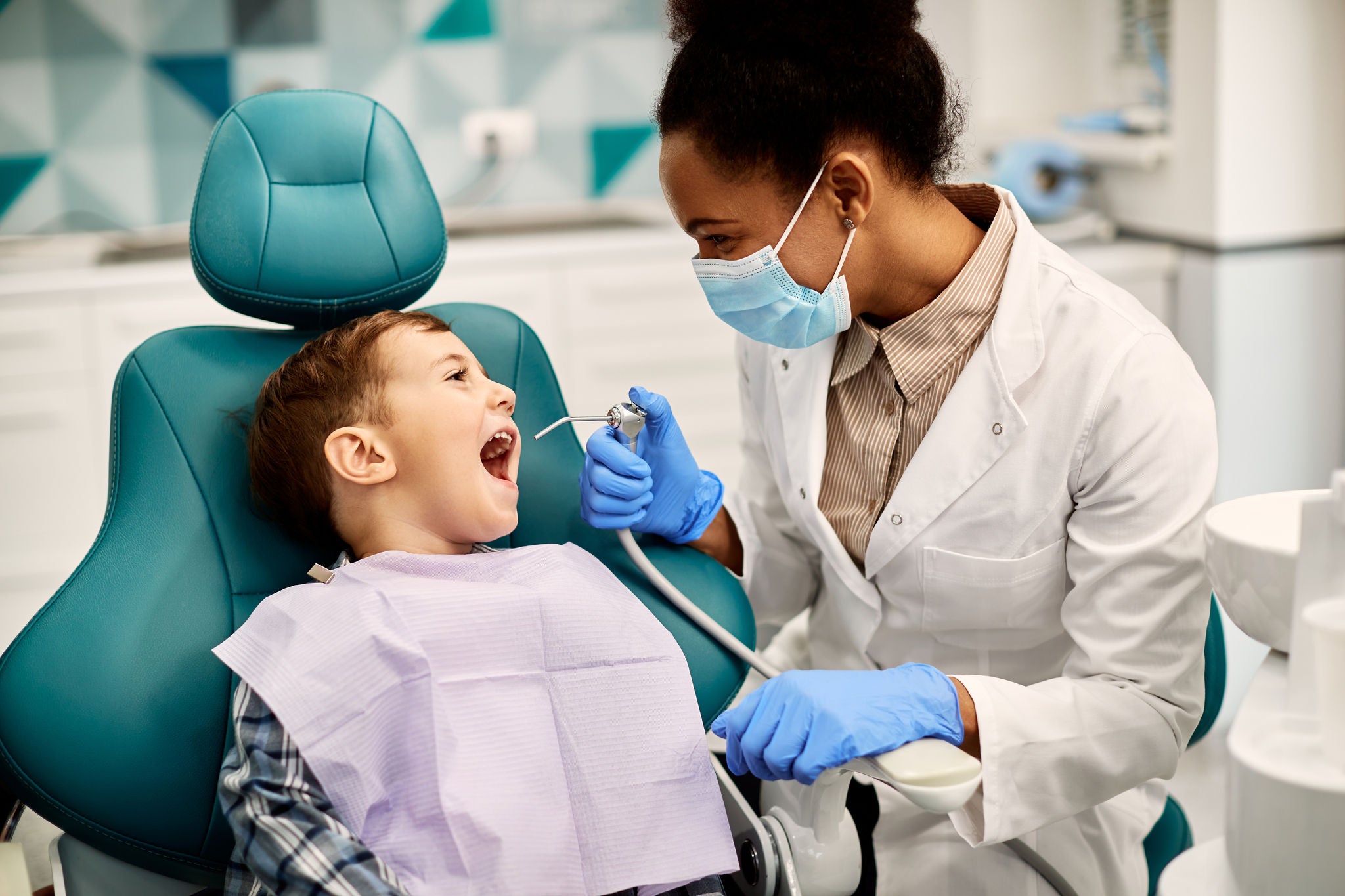
Paediatric Dentistry and Home-based Care: Top Experts Share Insight
As any dentist knows, the early stages of life are a vital time for establishing a baseline for great lifelong oral health. That’s why paediatric dentistry is such a pivotal component of the profession.

It’s also why we made paediatric dentistry and home-based oral care the primary focus in an episode of SUNSTAR’s webinar series, Let’s Talk Oral Health.
Two leading global experts in the field joined our own Dr. Martijn Verhulst (SUNSTAR Medical Liaison Manager) to discuss their passion for the job and their efforts to overcome the most common childhood disease in the world, among other key challenges.
You can watch the full hour-long conversation below, or keep reading for the most salient takeaways.
The vital importance, and opportunity, of paediatric dentistry
Paediatric dentistry covers the span of life from birth to age 18. This practice provides a momentous opportunity to shape the way people think about not just their teeth, but their oral care and their relationship with the dentist, for a lifetime.
“I prefer to talk about wellness and health promotion rather than talk about disease prevention,” said Dr. Silvia Sabatini, a dental hygienist from Italy. “Paediatric dentistry and treating children gives me the opportunity to contribute in building good habits and a proper lifestyle. “
Dr. Luis Karakowsky, a paediatric dentist from Mexico, agreed that dental professionals can make a lasting impression when working with patients at a young age.
“Everything starts here with paediatric patients,” he said. “We are responsible for creating a good patient, eliminating fear and anxiety.”
Throughout these pre-adult life stages, there are complicated factors at play for patient care, with parental influence being one of them. In our webinar, Dr. Sabatini and Dr. Karakowsky discussed some of the key challenges in paediatric dentistry today and their recommended approaches.
Early childhood caries
Early childhood caries (ECC) is “the most chronic childhood disease that we have in the world,” said Dr. Karakowsky. “For sure it's a public health issue.”
The World Health Organization represents ECC as a worldwide problem with a prevalence ranging from 60 to 90%.
This is one area where the dental community has struggled to align and advance, in part because of a lack of shared definition. The perceptions around “baby bottle syndrome” have oversimplified a complex and abundantly common condition.
Defining early childhood caries
The American Dental Association arrived at a definition of ECC that is now being widely accepted:
The disease of early childhood caries (ECC) is the presence of 1 or more decayed (noncavitated or cavitated lesions), missing (due to caries), or filled tooth surfaces in any primary tooth in a child 71 months of age or younger.
This disease is unique, according to Dr. Karakowsky, for several reasons.
“It’s the most common childhood disease,” he said. “Its speed of progression is impressive. There’s a high impact on quality of life of the children and their families, which is directly related to the severity of the disease and its treatment.”
“Finally,” he added, “it’s completely preventable. And that’s why we’re here.”
Preventing early childhood caries
Both Dr. Sabatini and Dr. Karakowsky agreed that prevention is paramount, and that raising awareness is a key first line of defence.
“We have to do this on two sides,” said Dr. Sabatini. First, with parents and caregivers. Second, with other medical professionals involved in the patient’s care. Collaboration leads to optimal outcomes.
“When talking about ECC, the best friend is definitely the paediatrician,” she said. Additionally, gynaecologists, speech therapists, nurses, midwives, and others play important roles in supporting children.
Beyond awareness, Dr. Sabatini’s preventative pillars include limiting sugar consumption, especially sweet drinks with deceptively high sugar content, and daily exposure to fluoride.
Of course, while it’s always preferred, primary prevention doesn’t always work.
Secondary prevention and treatment of early childhood caries
Secondary prevention refers to the care team’s efforts to reduce the impact of a disease once it has developed. The biggest factor here is early detection, underscoring the importance of regular visits to a dental care professional at a young age.
Additionally, this is an opportunity to reiterate the primary prevention pillars mentioned above, and to increase frequency of fluoride varnish applications.
Once ECC progresses to the tertiary prevention phase, the issue has become irreversible. Treatment at this point can include arrest of non-cavitated lesions and teeth‐preserving invasive or non-invasive operative care.
“The treatment decision for this tertiary prevention must be made in conjunction with the caries risk assessment,” said Dr Karakowsky.
ECC in infants
Successful prevention of early childhood caries doesn’t just start when the baby is born. It goes back even farther.
“I really love to start prevention as soon as possible,” said Dr. Sabatini, “so the best period is the first months – or even better, the pregnancy.”
She explained that dental professionals can provide critical guidance for parents in these early stages of their baby’s life. Among the tips she emphasised:
- Choose a suitable baby bottle, with a mouthpiece that is soft and perfectly fit to the sides out of the mouth.
- Clean the mouth after feeding, even when there are no teeth present. (She notes that cleanings for breastfed babies can wait a bit after feeding to absorb nutrients.)
- As teeth erupt, introduce a soft and small toothbrush with a lentil-sized amount of toothpaste, starting from six months.
Make your guidance as simple and straightforward as possible. “It would be best to inform the mother already during her pregnancy, so that she’s ready once the baby is born,” said Dr. Sabatini. “Parents have many other things to take care of, so the information needs to be really easy.”
Note that frequent mouth cleanings for infants are also helpful for preventing Candidiasis, which can cause the little ones a burning sensation that disrupts eating.
Risk factors for early childhood caries
Advise caregivers on these four feeding practices that Dr. Karakowsky lists as risk factors for ECC.
- Early introduction of sugar, as tasting sugar early strongly influences future behaviour and food preference for children.
- High frequency of food intake.
- Improper use of the bottle, especially what is inside of the bottle (containing natural or added sugar).
- Prolonged and high-frequency breastfeeding practices.
Simply making caregivers aware of the impact that moderation can have in these instances will help them be vigilant in making good decisions for their child.
Molar incisor hypomineralisation
Dr. Karakowsky called Molar Incisor Hypomineralisation (MIH) a “hot topic.” This condition affects children around the age of 6 and above, and has a multifactorial origin, with possible genetic components.
“It’s not a lifestyle condition, but something that happens during the development of permanent teeth,” explained Dr. Karakowsky. This makes MIH very difficult to prevent. The condition is very prevalent, however, estimated at about 13.5% worldwide.
This is another reason to urge the child’s caregiver to schedule frequent appointments with the dentist for examination and early detection of any issues. Additionally, they should be urged to pay attention to rapidly changing colours or dimensions of teeth, as possible early indicators of MIH.
A promising early treatment plan, according to Dr. Karakowsky, is a protective restoration, or “a temporary treatment that prevents post-eruptive breakdown.” Ultimately, it is essential for practitioners to be as conservative as possible with restoration of teeth with MIH, because tissue destroyed during these treatments is lost for life.
White spot lesions in adolescents
The final condition discussed by this expert panel is white spot lesions, which often affect individuals in the adolescent age range. This has also been discussed in the past as a key challenge for at-home orthodontic care.
To prevent white spot lesions as well as ECC and other paediatric oral health issues, Dr. Sabatini said the best approach is a culture of rigorous oral hygiene, tailored to the specific patient and their needs.
“Cleaning includes brushing and also interdental brushing, because we know that caries – and gingivitis too, we shouldn’t forget this condition – often start from interproximal areas,” she said. “So, it is crucial to keep these areas well cleaned. The choice of toothpaste must be done with the specific condition in mind.”
We thank Dr. Sabatini and Dr. Karakowsky for participating and lending their insights on this crucial topic.



